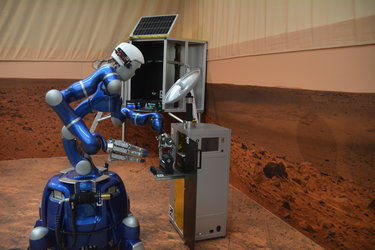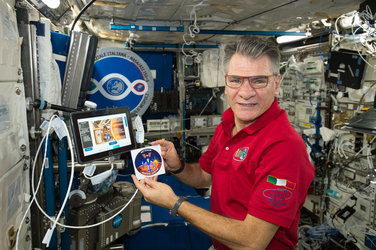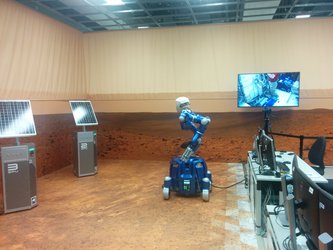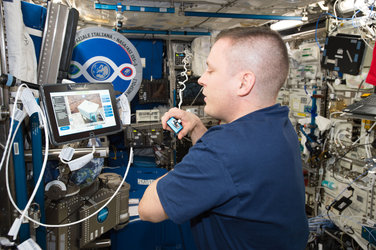
Horizons science – robotics
Flying at 28 800 km/h, 400 km above Earth, from the International Space Station, ESA astronaut Alexander Gerst controlled a robot called Justin on 17 August 2018. Justin was stationed at the DLR German Aerospace Center in Oberpfaffenhofen, Germany.
ESA has run multiple experiments from the Space Station with robots to test the network, the control system and the robots on Earth. This is a new area for everybody involved and each aspect needs to be tested. This is the third in a series of SUPVIS-Justin orbital experiments. The first was carried out by ESA astronaut Paolo Nespoli in August 2017.
The SUPVIS-Justin experiment took around four hours in total. This included set-up, software updates and two hours of interaction between Alexander and Justin.
The tests were chosen to enact future scenarios in which astronauts orbiting distant planets and moons can instruct robots to do difficult or dangerous tasks and set up base before landing for further exploration. The experiment fits in ESA’s strategy to prepare for further exploration of our Universe.






